Chlorimuron-ethyl
Synonym(s):Ethyl 2-(4-chloro-6-methoxy-2-pyrimidinylcarbamoylsulfamoyl)benzoate
- CAS NO.:90982-32-4
- Empirical Formula: C15H15ClN4O6S
- Molecular Weight: 414.82
- MDL number: MFCD00128063
- EINECS: 618-690-2
- SAFETY DATA SHEET (SDS)
- Update Date: 2024-12-18 14:15:30
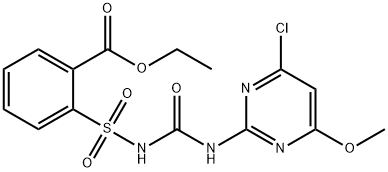
What is Chlorimuron-ethyl?
Chemical properties
Colorless to off white or pale yellow crystals or powder. Some formulations are listed as “flammable” in the literature. Odorless.
The Uses of Chlorimuron-ethyl
Chlorimuron-ethyl is used in weed control method as herbicide.
The Uses of Chlorimuron-ethyl
Herbicide.
Definition
ChEBI: Chlorimuron-ethyl is an ethyl ester resulting from the formal condensation of the carboxy group of chlorimuron with ethanol. A proherbicide for chloimuron, it is used as herbicide for the control of broad-leaved weeds in peanuts, soya beans, and other crops. It has a role as a proherbicide, an EC 2.2.1.6 (acetolactate synthase) inhibitor and an agrochemical. It is a sulfamoylbenzoate, a N-sulfonylurea, an aromatic ether, an ethyl ester, an organochlorine pesticide and a member of pyrimidines. It is functionally related to a chlorimuron. It is a conjugate acid of a chlorimuron-ethyl(1-).
General Description
Colorless crystals. Used as an herbicide.
Reactivity Profile
Chlorimuron-ethyl is a sulfonyl urea, and pyrimidine derivative.
Agricultural Uses
Herbicide: Used to control broadleaf weeds and annual morning glory in soybeans and peanuts. Not listed as registered for use in EU countries. Registered for use in the U.S., except California. There are more than 25 global suppliers.
Trade name
AUTHORITY®; CANOPY® (chlorimuron-ethyl + Metribuzin); CLASSIC®; CONCERT® cancelled; DPX-F6025®; GEMINI®[C]; LOROX®[C]; PREVIEW®[C]; RELIANCE®; SKERMISH®, cancelled; SYNCHRONCY®; SYNCHRONY®[C]
Potential Exposure
A sulfonylurea/pyrimidine derivative herbicide used to control broadleaf weeds and annual morning glory in soybeans and peanuts. Not listed as registered for use in EU countries. Registered for use in the United States and available from more than 25 global suppliers.
Metabolic pathway
Excised soybean seedlings rapidly metabolize 14C- chlorimuron ethyl, but common cocklebur and redroot pigweed, which are sensitive to chlorimuron ethyl, metabolize much more slowly. Two metabolites are primarily identified. By intact corn seedlings, chlorimuron ethyl undergoes biotransformation to give more metabolites and under UV light is photodegraded into smaller fragments.
Shipping
UN3077 Environmentally hazardous substances, solid, n.o.s., Hazard class: 9; Labels: 9-Miscellaneous hazardous material, Technical Name Required.
Incompatibilities
Incompatible with oxidizers (chlorates, nitrates, peroxides, permanganates, perchlorates, chlorine, bromine, fluorine, etc.); contact may cause fires or explosions. Keep away from alkaline materials, strong bases, strong acids, oxoacids, epoxides, nitrates.
Waste Disposal
Do not discharge into drains or sewers. Dispose of waste material as hazardous waste using a licensed disposal contractor to an approved landfill. Consult with environmental regulatory agencies for guidance on acceptable disposal practices. Incineration with effluent gas scrubbing is recommended. Containers must be disposed of properly by following package label directions or by contacting your local or federal environmental control agency, or by contacting your regional EPA office.
Properties of Chlorimuron-ethyl
| Melting point: | 180-182°C |
| Density | 1.4727 (rough estimate) |
| refractive index | 1.6100 (estimate) |
| storage temp. | Inert atmosphere,2-8°C |
| solubility | Freely soluble in aqueous solution |
| form | Solid |
| pka | 3.78±0.10(Predicted) |
| color | White to Light Yellow |
| Water Solubility | 1.018mg/L(temperature not stated) |
| Stability: | Unstable in DMSO solution |
| CAS DataBase Reference | 90982-32-4(CAS DataBase Reference) |
| EPA Substance Registry System | Chlorimuron-ethyl (90982-32-4) |
Safety information for Chlorimuron-ethyl
| Signal word | Warning |
| Pictogram(s) |
 Exclamation Mark Irritant GHS07 |
| GHS Hazard Statements |
H303:Acute toxicity,oral H313:Acute toxicity,dermal H315:Skin corrosion/irritation H319:Serious eye damage/eye irritation H332:Acute toxicity,inhalation H335:Specific target organ toxicity, single exposure;Respiratory tract irritation |
| Precautionary Statement Codes |
P261:Avoid breathing dust/fume/gas/mist/vapours/spray. P304+P340:IF INHALED: Remove victim to fresh air and Keep at rest in a position comfortable for breathing. P305+P351+P338:IF IN EYES: Rinse cautiously with water for several minutes. Remove contact lenses, if present and easy to do. Continuerinsing. P405:Store locked up. |
Computed Descriptors for Chlorimuron-ethyl
| InChIKey | NSWAMPCUPHPTTC-UHFFFAOYSA-N |
Chlorimuron-ethyl manufacturer
Bharat Rasayan
New Products
Tert-butyl bis(2-chloroethyl)carbamate 4-Methylphenylacetic acid N-Boc-D-alaninol N-BOC-D/L-ALANINOL N-octanoyl benzotriazole 3-Morpholino-1-(4-nitrophenyl)-5,6-dihydropyridin- 2(1H)-one Furan-2,5-Dicarboxylic Acid DIETHYL AMINOMALONATE HYDROCHLORIDE 1,1’-CARBONYLDIIMIDAZOLE R-2-BENZYLOXY PROPIONIC ACID 1,1’-CARBONYLDI (1,2-4 TRIAZOLE) N-METHYL INDAZOLE-3-CARBOXYLIC ACID (2-Hydroxyphenyl)acetonitrile 4-Bromopyrazole 5-BROMO-2CYANO PYRIDINE 5,6-Dimethoxyindanone 5-broMo-2-chloro-N-cyclopentylpyriMidin-4-aMine 2-(Cyanocyclohexyl)acetic acid 4-methoxy-3,5-dinitropyridine 1-(4-(aminomethyl)benzyl)urea hydrochloride 2-aminopropyl benzoate hydrochloride diethyl 2-(2-((tertbutoxycarbonyl)amino) ethyl)malonate tert-butyl 4- (ureidomethyl)benzylcarbamate Ethyl-2-chloro((4-methoxyphenyl)hydrazono)acetateRelated products of tetrahydrofuran

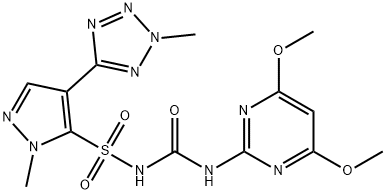


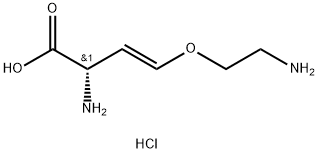

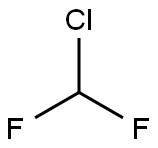

You may like
-
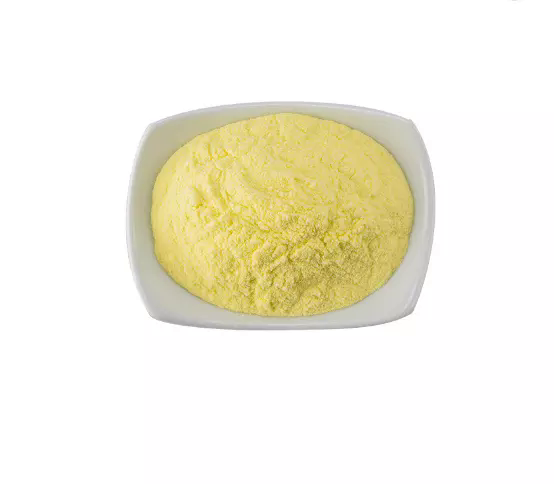 90982-32-4 Chlorimuron ethyl 98%View Details
90982-32-4 Chlorimuron ethyl 98%View Details
90982-32-4 -
 Chlorimuron-ethyl 96% CAS 90982-32-4View Details
Chlorimuron-ethyl 96% CAS 90982-32-4View Details
90982-32-4 -
 Chlorimuron ethyl CAS 90982-32-4View Details
Chlorimuron ethyl CAS 90982-32-4View Details
90982-32-4 -
 1975-50-4 98%View Details
1975-50-4 98%View Details
1975-50-4 -
 2-HYDROXY BENZYL ALCOHOL 98%View Details
2-HYDROXY BENZYL ALCOHOL 98%View Details
90-01-7 -
 14714-50-2 (2-Hydroxyphenyl)acetonitrile 98+View Details
14714-50-2 (2-Hydroxyphenyl)acetonitrile 98+View Details
14714-50-2 -
 118753-70-1 98+View Details
118753-70-1 98+View Details
118753-70-1 -
 733039-20-8 5-broMo-2-chloro-N-cyclopentylpyriMidin-4-aMine 98+View Details
733039-20-8 5-broMo-2-chloro-N-cyclopentylpyriMidin-4-aMine 98+View Details
733039-20-8